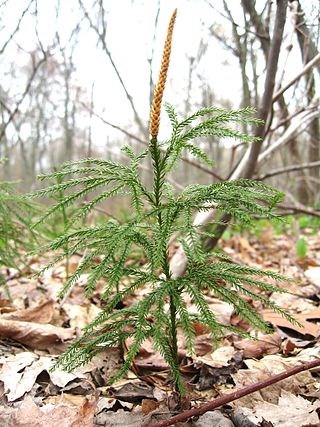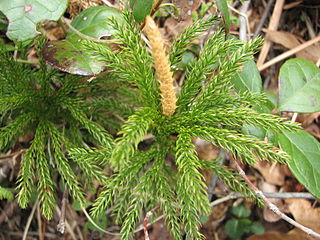Pope Marinus II was the bishop of Rome and ruler of the Papal States from 30 October 942 to his death. He has also been mistakenly called Martinus III. He ruled during the Saeculum obscurum. He was also erroneously called Martin III leading to the second pope named Martin taking the name Martin IV.
Pope Stephen VII was the bishop of Rome and nominal ruler of the Papal States from February 929 to his death in 931. A candidate of the infamous Marozia, his pontificate occurred during the period known as the Saeculum obscurum.
Pope Stephen VIII was the bishop of Rome and nominal ruler of the Papal States from 14 July 939 to his death. His pontificate occurred during the Saeculum obscurum, when the power of popes was diminished by the ambitious counts of Tusculum, and was marked by the conflict between his patron, Alberic II of Spoleto, and King Hugh of Italy.

Saeculum obscurum, also known as the Pornocracy or the Rule of the Harlots, was a period in the history of the Papacy during the first two-thirds of the 10th century, following the chaos after the death of Formosus in 896 which saw seven or eight papal elections in as many years. It began with the installation of Pope Sergius III in 904 and lasted for sixty years until the death of Pope John XII in 964. During this period, the popes were influenced strongly by a powerful and allegedly corrupt aristocratic family, the Theophylacti, and their relatives and allies. The era is seen as one of the lowest points of the history of the Papal office.

Helianthemum nummularium is a species of rock-rose (Cistaceae), native to most of Europe.
Pogonopoma is a genus of armored catfish native to rivers in south and southeast Brazil.
Calophyllum obscurum is a species of flowering plant in the Calophyllaceae family. It is found only in Solomon Islands.

Dendrolycopodium dendroideum, synonym Lycopodium dendroideum, known as tree groundpine, is a North American species of clubmoss. It is part of a complex of species colloquially known as groundpine, which taxa were formerly lumped into the species Lycopodium obscurum. The species is native to Russia and also to the colder parts of North America. The genus Dendrolycopodium is accepted in the Pteridophyte Phylogeny Group classification of 2016, but not in other classifications, which submerge the genus in Lycopodium.

Dendrolycopodium obscurum, synonym Lycopodium obscurum, commonly called rare clubmoss, ground pine, or princess pine, is a North American species of clubmoss in the family Lycopodiaceae. It is a close relative of other species such as D. dendroideum and D. hickeyi, also treelike. It is native to the eastern United States and southeastern Canada from Georgia to Minnesota to Nova Scotia. It grows in the understory of temperate coniferous and deciduous forests, where it is involved in seral secondary succession, growing in clonal colonies some years after disturbance has occurred. It has also been found in Japan, Taiwan, Korea, Russian Far East, and northeastern China.
Xanthophyllum obscurum is a tree in the family Polygalaceae. The specific epithet obscurum is from the Latin meaning "dark", referring to the dark colour of the dried flowers and fruits.

Cyardium is a genus of longhorn beetles of the subfamily Lamiinae, containing the following species:

Dendrolycopodium hickeyi known as Hickey's tree club-moss or Pennsylvania clubmoss, is a North American species of clubmoss in the family Lycopodiaceae. It is native to eastern and Central Canada and the eastern and north-central United States. The genus Dendrolycopodium is accepted in the Pteridophyte Phylogeny Group classification of 2016, but not in other classifications, which submerge the genus in a larger Lycopodium.

Myoporum obscurum, commonly known as popwood, sandalwood or bastard ironwood is a plant in the figwort family, Scrophulariaceae. It is a very rare shrub, endemic to Norfolk Island where it occurs in a few scattered locations.

Cyardium castelnaudii is a species of beetle in the family Cerambycidae. It was described by James Thomson in 1864. It is known from Malaysia, Java, and Sumatra.
Cyardium cribrosum is a species of beetle in the family Cerambycidae. It was described by Francis Polkinghorne Pascoe in 1866. It is known from Sumatra, Borneo and Malaysia.

Cyardium granulatum is a species of beetle in the family Cerambycidae. It was described by Stephan von Breuning in 1980. It is known from the Philippines.
Cyardium malaccense is a species of beetle in the family Cerambycidae. It was described by Stephan von Breuning in 1968. It is known from Malaysia.
Cyardium variegatum is a species of beetle in the family Cerambycidae. It was described by Per Olof Christopher Aurivillius in 1913. It is known from Sumatra and Borneo.
Bactridium obscurum is a species of root-eating beetle in the family Monotomidae. It is found in North America.

Epilobium obscurum is a species of flowering plant belonging to the family Onagraceae.








